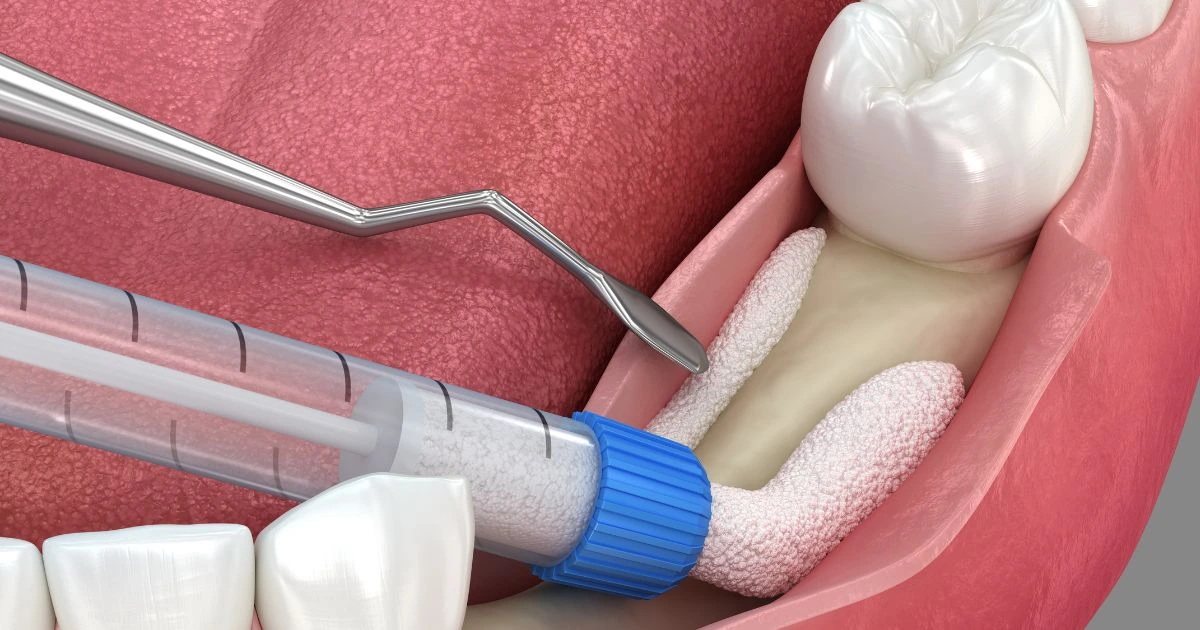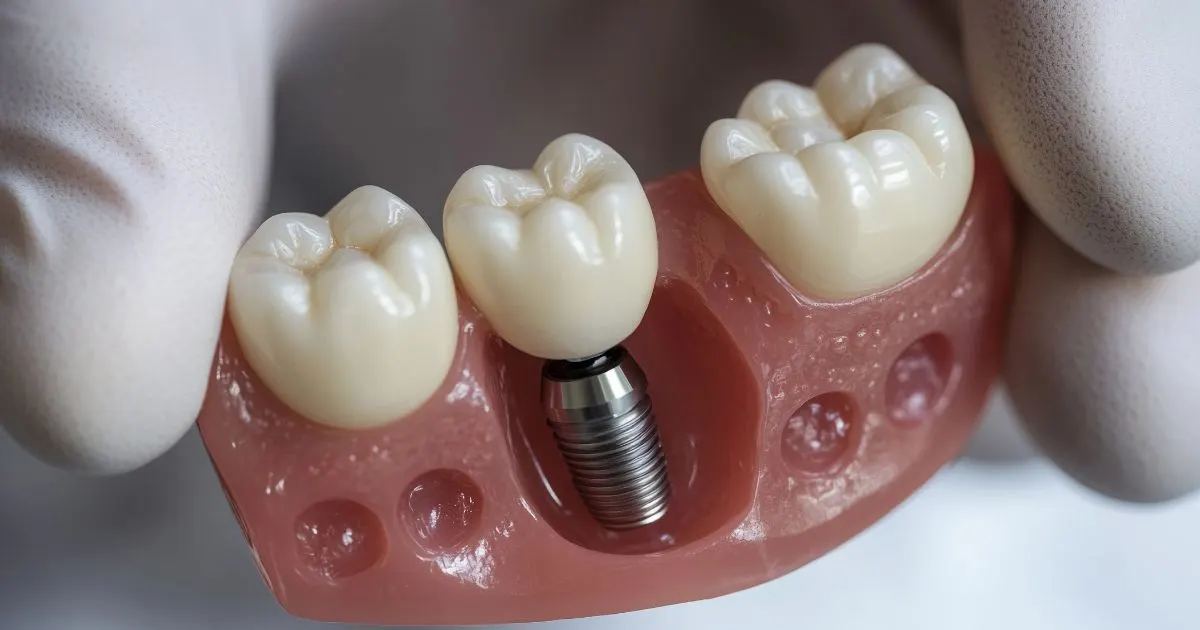Table of Contents
Losing a tooth can affect more than just your smile. It can change how you eat, speak, and even how your face looks over time. Many people who want dental implants are surprised to learn that the success of their treatment often depends on something they’ve never heard of before: bone grafts. If you’ve experienced tooth loss or have been living with gum disease, your jawbone may not be strong enough to support implants right away. That’s where bone grafting comes in.
At Peninsula Center of Cosmetic Dentistry, patients often express concerns about whether implants are right for them. Some worry about surgery, while others want to know if their bone structure can handle the procedure. The good news is that with advancements in modern dentistry, bone graft for dental implants has become a safe and effective solution that restores strength and stability to your jaw, making successful implants possible for more people than ever before.
Building the Foundation: Why Bone Grafts Matter
Dental implants rely on one critical factor for success: a healthy, dense jawbone. When teeth are missing, the bone that once supported them begins to shrink due to a lack of stimulation. Over time, this bone loss can make it impossible to securely anchor an implant. A bone graft for tooth loss solves this issue by rebuilding bone where it has weakened or disappeared, giving your jaw a second chance to hold an implant.
A jawbone graft surgery involves placing specialized bone material into the area that needs reinforcement. The graft serves as a framework, allowing your body to naturally generate new bone tissue. This process not only restores volume but also improves the overall contour and strength of your jawline, both functionally and aesthetically.
Without proper bone density, implants may not integrate correctly with the jaw, increasing the risk of movement or failure. By undergoing a graft first, you set the stage for a long-lasting, natural-looking restoration that feels and functions like a real tooth.
Understanding the Procedure: What Happens During a Bone Graft
The thought of bone grafts might sound intimidating, but the procedure is typically straightforward and performed under local anesthesia or sedation for comfort. During the process, your dentist or oral surgeon makes a small incision in the gum to expose the area of bone loss. Then, grafting material, either from your own body, a donor source, or a synthetic substitute, is placed in the area.
Over several months, your body gradually replaces this graft with new bone. Once your jaw is strong enough, your implant can be placed securely. This healing time is crucial because it ensures that the bone integrates properly, forming a stable base for the implant.
For many patients, the most impressive part of this process is how naturally the graft becomes part of their anatomy. The new bone doesn’t just fill space; it fuses completely, restoring both structure and strength.
Types of Bone Grafts and Choosing the Best Bone Graft Material
Not all grafts are the same, and your dentist will choose the right one based on your individual needs. The types of bone grafts commonly used in dentistry include:
Autografts: Bone taken from another area of your own body, such as the chin or hip. This option has excellent compatibility because it uses your own tissue.
Allografts: Bone sourced from a human donor, carefully sterilized and processed for safety. This method avoids the need for an additional surgical site.
Xenografts: Bone derived from animal sources, often bovine. It acts as a long-lasting framework that your body gradually replaces with new bone.
Alloplasts: Synthetic grafts made from biocompatible materials like calcium phosphate, designed to mimic the structure of natural bone.
The best bone graft material depends on your specific case. Factors such as the extent of bone loss, your overall health, and your preferences will help determine the ideal choice. Your dentist’s goal is to create a strong, natural bone base while ensuring your comfort throughout the process.
Bone Grafting and Dental Implants: A Perfect Partnership
A strong bone foundation is the key to long-term implant success. The graft ensures that the implant integrates fully into your jaw through a process called osseointegration, in which the titanium post bonds to natural bone. Without a graft, patients with bone loss might experience implant instability or discomfort over time.
Many people are pleasantly surprised at how simple and comfortable a bone graft for dental implants can be. Once healed, the implant can be placed with confidence, providing a permanent solution that mimics the look and feel of natural teeth. Patients can eat, smile, and speak without worry, something dentures or bridges cannot fully achieve.
Addressing Concerns About Healing and Recovery
Healing after jawbone graft surgery varies from person to person, but most patients recover smoothly with proper care. Mild soreness, swelling, or tenderness is common for the first few days and can be managed with medication and following post-operative instructions.
During recovery, it’s important to maintain good oral hygiene and follow your dentist’s dietary recommendations. Avoiding hard foods, smoking, and excessive physical activity helps the graft heal efficiently. Over time, the new bone integrates seamlessly, making the jaw ready for implants.
Your dentist will monitor progress through imaging to confirm when your bone is strong enough for the next phase. At Peninsula Center of Cosmetic Dentistry, advanced imaging technology ensures accurate assessment and precise planning for every step of your treatment.
Preventing Future Bone Loss
After grafting and implant placement, maintaining bone health becomes essential. Bone is living tissue, and it needs stimulation from chewing to stay strong. That’s one of the reasons implants are so beneficial: they provide the same pressure on the bone as natural teeth, preventing further deterioration.
Regular dental check-ups, a nutrient-rich diet, and good oral hygiene all help preserve your graft and implant in the long term. If you’ve had a bone graft for gum disease, controlling inflammation through professional cleanings and proper care helps sustain healthy bone levels.
The Long-Term Benefits of Bone Grafting
Bone grafting doesn’t just prepare you for implants; it protects your oral health in the long run. A restored bone structure allows for balanced bite alignment, reduces the risk of facial sagging, and keeps your remaining teeth stable.
Patients who undergo grafting often report higher satisfaction with their dental implants because they feel more secure and natural. Beyond the physical improvements, the psychological benefit of having a complete, confident smile is just as valuable.
Start Your Journey Toward a Stronger, Healthier Smile
If you’ve been told that you’re not a candidate for implants due to bone loss, bone grafts in Los Altos, CA, may change that. With the expertise of Peninsula Center of Cosmetic Dentistry, you can rebuild your jaw’s strength and restore your smile’s full potential.
Start Your Journey Toward Dental Implants – Ask About Bone Grafts Now
A Confident Future with Bone Grafting
Bone grafts make lasting dental implants possible by rebuilding jaw strength, restoring aesthetics, and preventing further bone loss. Whether you’ve experienced tooth loss, gum disease, or trauma, grafting provides the foundation you need for a stable and natural-looking restoration. To learn more about your options and receive expert guidance, contact us today and schedule a consultation at Peninsula Center of Cosmetic Dentistry.
Your renewed confidence begins with a strong foundation, and bone grafting is where that foundation starts.







